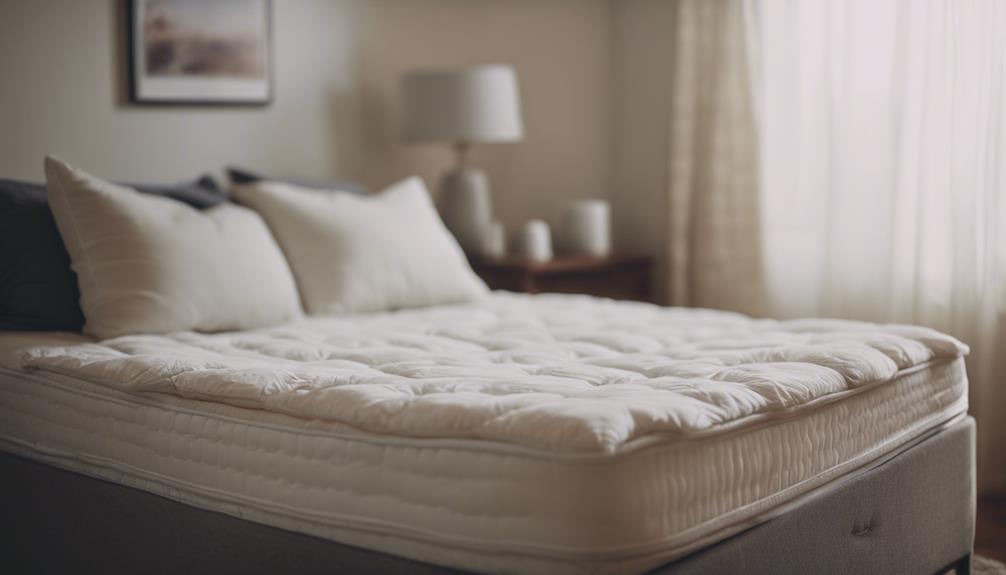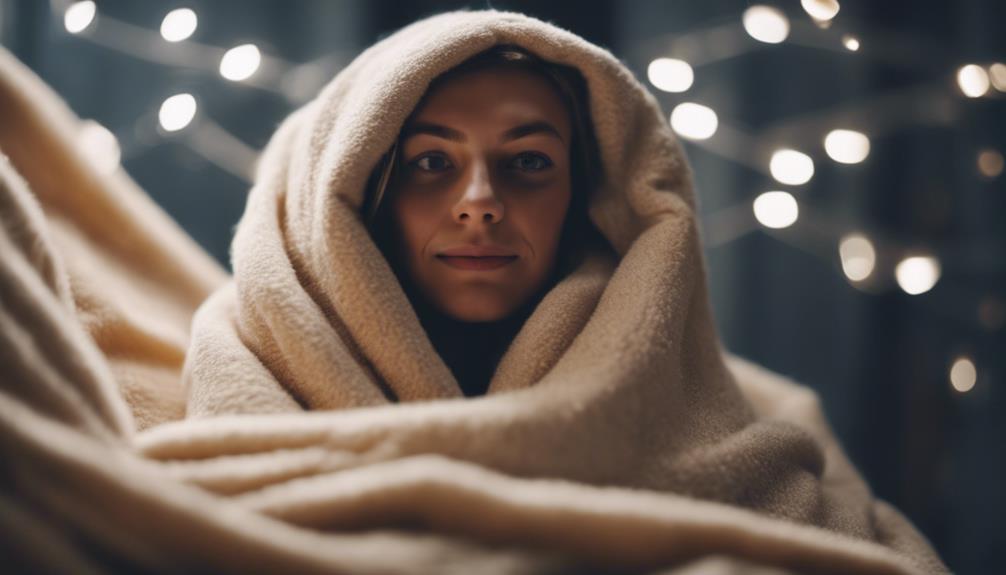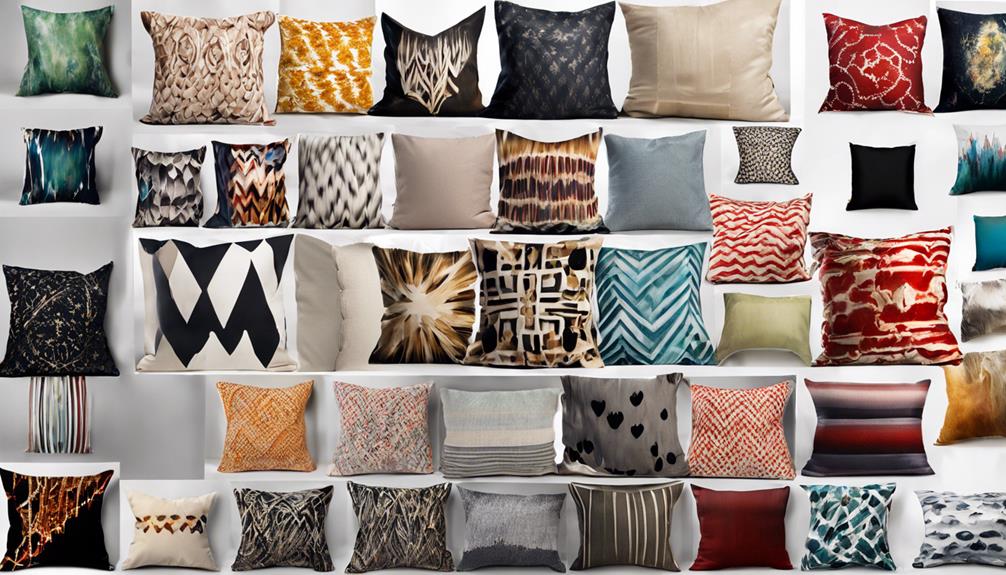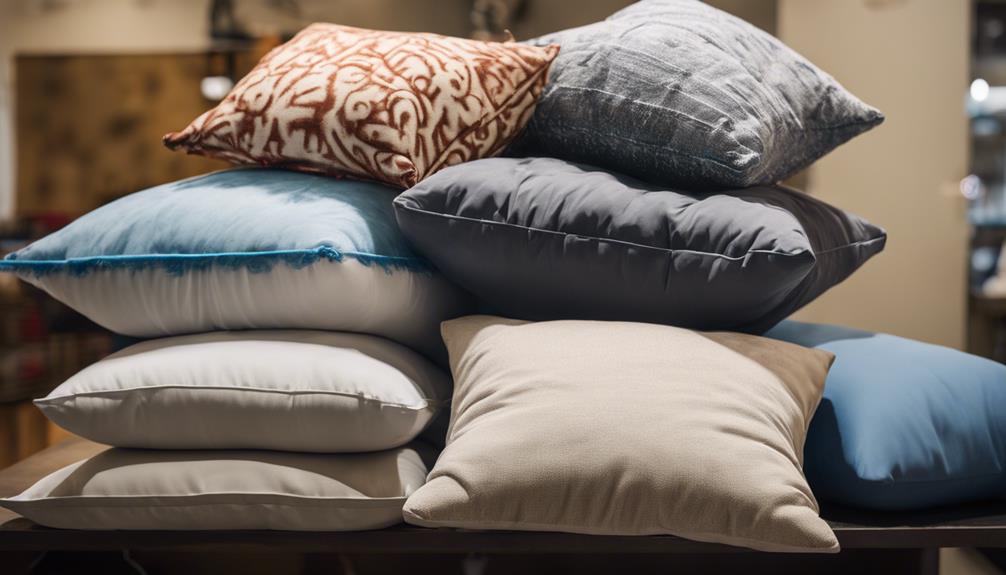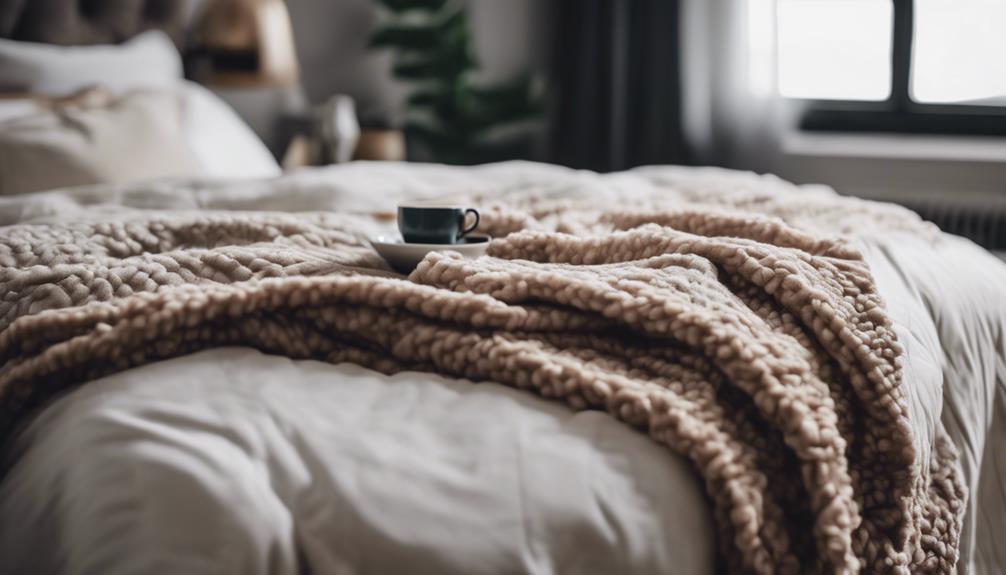Electric throws are secure due to strong characteristics such as insulated heating elements, adjustable heat settings, and automatic shut-off timers. It is crucial to adhere to manufacturer’s guidelines, refrain from folding or placing heavy objects on them, and unplug when not in use. Customize heat levels to prevent overheating and regularly inspect for wear. Check for damaged wires and fire hazards, distribute the throw evenly, and be cautious about electromagnetic fields. Consider safety features based on the user’s age and regulate temperatures. For further information on electric throw safety, refer to specific guidelines and recommendations in the detailed research.
Key Takeaways
- Safety features include insulation and automatic shut-off timers.
- Regularly inspect for wear and avoid folding to prevent damage.
- Electric throws emit low-frequency EMFs with low associated risks.
- Follow manufacturer's guidelines for safe usage to prevent hazards.
- Pregnant women advised to avoid electric blankets and throws for safety.
Understanding Electric Throws Safety Features
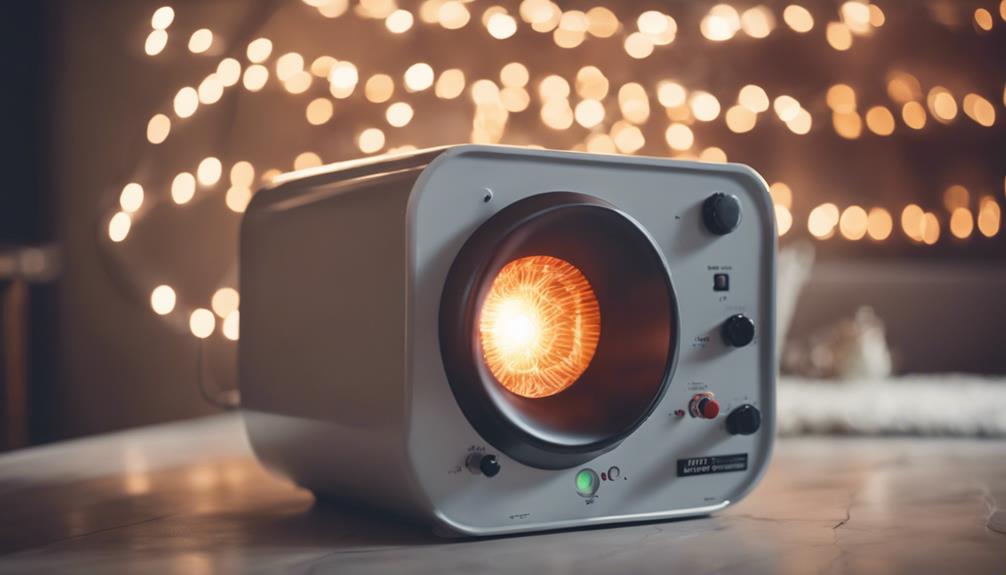
When using electric throws, it's vital to understand their safety features to prevent any potential hazards. Safety standards govern the design of electric throws, guaranteeing that heating elements are well-insulated and protected. Many electric throws come with adjustable heat settings, allowing users to control the warmth according to their preferences. Additionally, automatic shut-off timers are a common feature in electric throws, providing an extra layer of safety in case the throw is left unattended. It's essential to check for safety certifications on electric throws to confirm compliance with industry standards.
Before using an electric throw, always inspect it for any signs of damaged wires or components. This simple step can help prevent accidents and ensure the longevity of your electric throw. By familiarizing ourselves with these safety features and taking the necessary precautions, we can enjoy the comfort and warmth provided by electric throws without compromising on safety.
Proper Use of Electric Throws

To guarantee safe and effective use of electric throws, always follow the manufacturer's guidelines. Avoid folding or bunching up the electric throw as this can lead to overheating or damage to the wires, posing a safety risk.
Before using the electric throw, remember to check for any signs of wear or damage to ensure safe operation. It's important not to place heavy objects on top of the electric throw, as this may cause damage to the heating elements.
When the electric throw isn't in use, remember to unplug it to reduce any potential safety risks. By following these simple guidelines and being mindful of how you use your electric throw, you can ensure a safe and comfortable experience while enjoying its warmth.
Keep these tips in mind to maintain the longevity and safety of your electric throw.
Temperature Control for Electric Throws

Electric throws offer a range of heat settings options, allowing users to adjust the temperature to their liking.
The overheating protection feature guarantees safety during use, providing peace of mind.
User-friendly temperature controls make it easy for individuals to personalize their comfort level on electric throws.
Heat Settings Options
We can customize the heat settings on electric throws to guarantee personalized comfort and safety. Electric throws often come with multiple heat settings, allowing users to adjust the temperature to their liking. This flexibility in warmth levels ensures that individuals can find the perfect setting for their needs, whether they prefer a gentle warmth or a more intense heat.
The temperature control features in electric throws play a vital role in preventing overheating and discomfort, enhancing the overall safety of the product. By offering users the ability to tailor the heat settings to their preferences, electric throws not only increase user satisfaction but also provide an added layer of safety through their customizable options.
Overheating Protection Feature
When using electric throws, the guarantee of safety and comfort is maintained through the implementation of overheating protection features. These features, such as automatic shut-off, ensure that the electric throws can regulate heat output effectively.
Here's why they matter:
- Preventing Fire Hazard: Overheating protection in electric throws prevents them from reaching dangerously high temperatures, reducing the risk of fire hazards.
- Enhancing Safety: The automatic shut-off feature activates when the set temperature is reached, ensuring safety by preventing excessive heat.
- Ensuring Comfort: Temperature control mechanisms help maintain a comfortable level of warmth without compromising safety.
- Peace of Mind: Users can rely on the overheating protection feature in electric throws, allowing them to enjoy warmth worry-free.
User-Friendly Temperature Controls
The convenience of adjusting heat settings for personalized warmth is a key feature of user-friendly temperature controls in electric throws. These controls allow users to regulate the heat settings based on their comfort level, ensuring a cozy environment without discomfort.
With multiple heat settings available, users can choose the ideal warmth they desire, from low to high, to suit individual preferences. By being able to adjust the temperature, users can enjoy the soothing warmth of electric throws without the risk of overheating.
This feature not only enhances user experience but also promotes a safe and comfortable usage of electric throws, creating a snug and inviting atmosphere for relaxation.
Preventing Overheating With Electric Throws
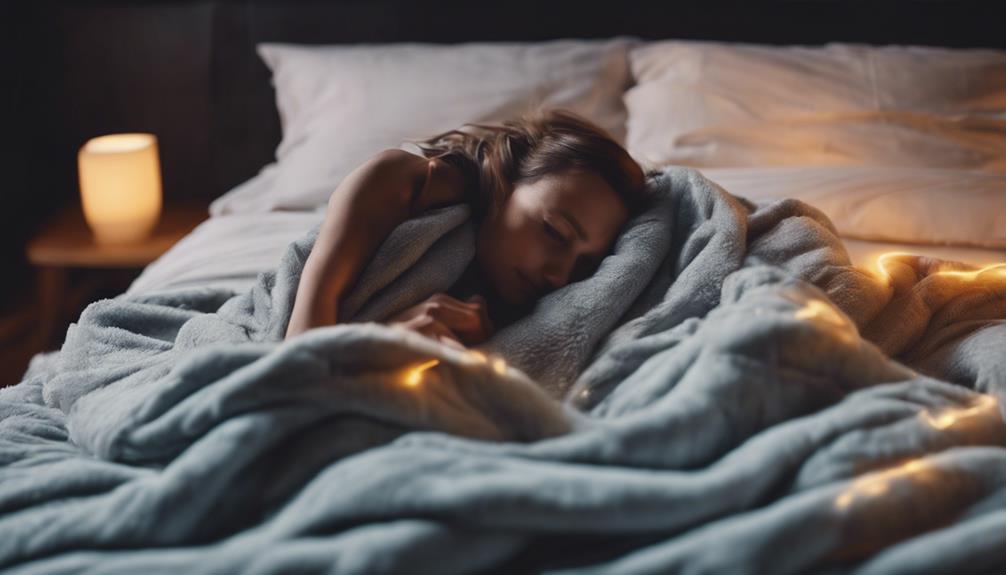
To prevent overheating with electric throws, always verify they're spread evenly to maintain safe usage. It's important to follow these guidelines to make sure the safety and longevity of your electric throw:
- Utilize Safety Features: Electric throws come equipped with auto-shutoff features to prevent overheating, offering an added layer of protection.
- Avoid Folding: Folding electric throws can disrupt consistent heat distribution, potentially leading to overheating in certain areas.
- Regularly Inspect for Wear: Check for any signs of wear or damage on the heating elements of the throw to address issues promptly.
- Adhere to Manufacturer's Instructions: Following the manufacturer's guidelines for usage and maintenance is essential in preventing overheating incidents and ensuring safe operation.
Inspecting for Damaged Wires
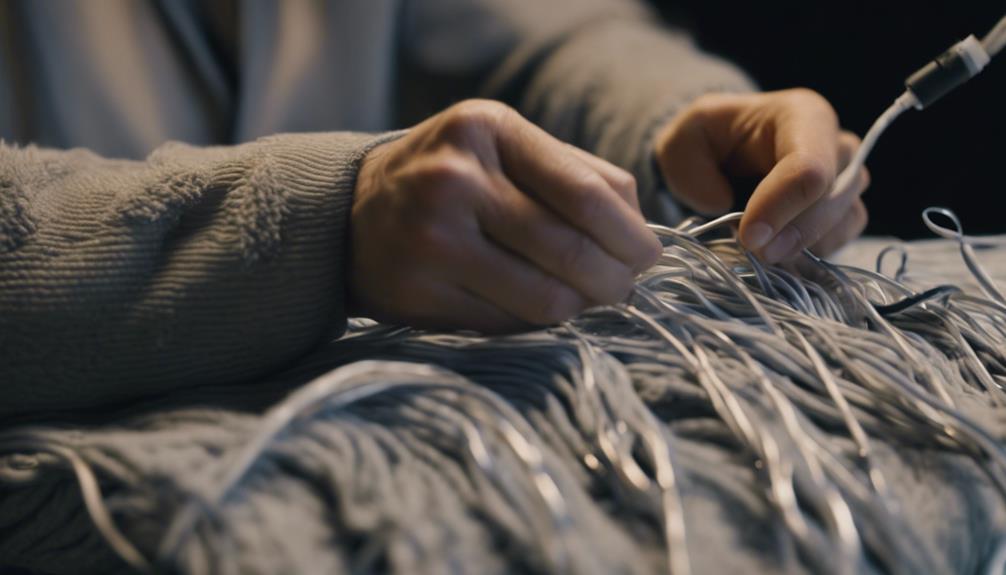
Inspecting for damaged wires in electric throws is essential for safety.
We need to check for exposed or frayed wiring, as these are signs of potential hazards.
It's recommended to regularly examine the connections and cords to prevent accidents.
Wire Inspection Importance
Regularly checking electric throw blankets for damaged wires is essential to guarantee safety and prevent potential hazards. When inspecting for damaged wires in electric throws, keep the following points in mind:
- Safety First: Ensuring that there are no frayed wires will help prevent fire hazards and electrical malfunctions.
- Longevity: Regular checks for exposed wires can extend the lifespan of your electric throw blanket.
- Risk Reduction: Exposed wires increase the likelihood of electrical shorts, which can be dangerous.
- Compliance: Adhering to safety standards through proper wire inspection is vital to prevent accidents related to faulty wiring.
Signs of Wire Damage
Keeping an eye out for exposed wires, frayed edges, or melted areas is critical when inspecting electric throws for wire damage. Damaged wires pose serious risks, such as electrical shocks or fires, when using these throws.
If any signs of wire damage are detected, it's vital to discontinue use immediately and arrange for professional repair. Regularly inspecting for wire damage is a fundamental aspect of maintenance to guarantee the safety and longevity of your electric throw.
Safety Precautions Recommended
When inspecting electric throws for safety, it's important to scan for any signs of wire damage that could lead to potential hazards. Here are some safety precautions recommended for guaranteeing blanket safety:
- Inspect the electric throw for any exposed wires or fraying that may pose a risk of electrical shocks or fires.
- Check for signs of overheating, as damaged wires can lead to dangerous levels of heat generation.
- Regularly examine the wiring integrity of the electric throw to prevent accidents and maintain safety standards.
- Address any damaged wires promptly to guarantee the safe and effective use of the electric throw.
Electric Throws: Fire Hazard Risks
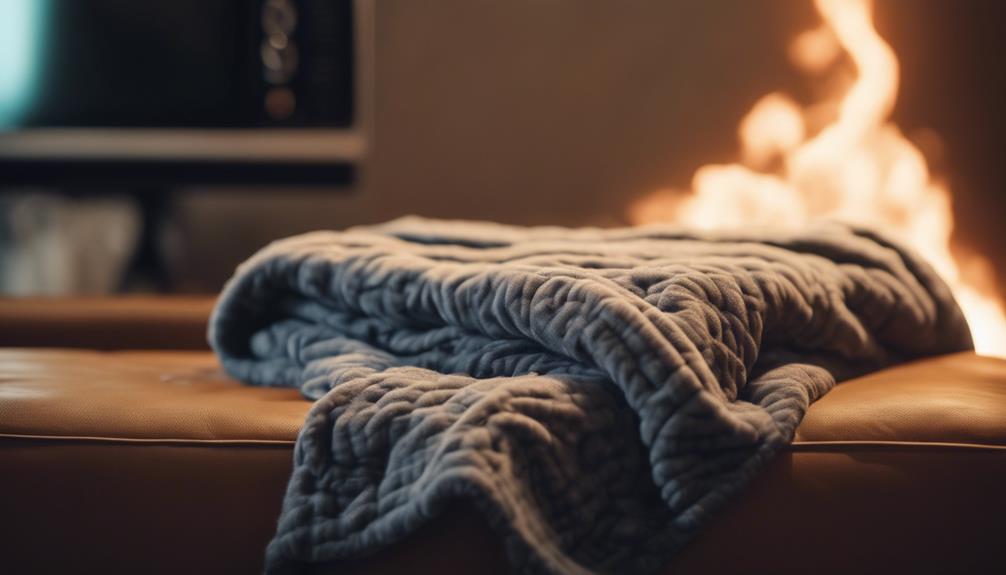
To prevent potential fire hazards, it's vital to understand the risks associated with using electric throws. Electric throws can become a fire hazard if not used properly or if they're damaged. Overheating, often caused by prolonged use or placing heavy items on the throw, increases the risk of a fire starting.
It's important to avoid folding electric throws as this can damage the heating elements and potentially lead to a fire. Regularly inspecting your electric throw for any signs of wear, exposed wires, or damage is essential to guarantee safety. Following the manufacturer's instructions is key to safe usage, including avoiding placing heavy objects on the throw and remembering to turn it off when not in use.
Being proactive in checking for damaged wires and adhering to safety tips can greatly reduce the potential risks of fire hazards associated with electric throws.
Electric Throws and Electromagnetic Fields
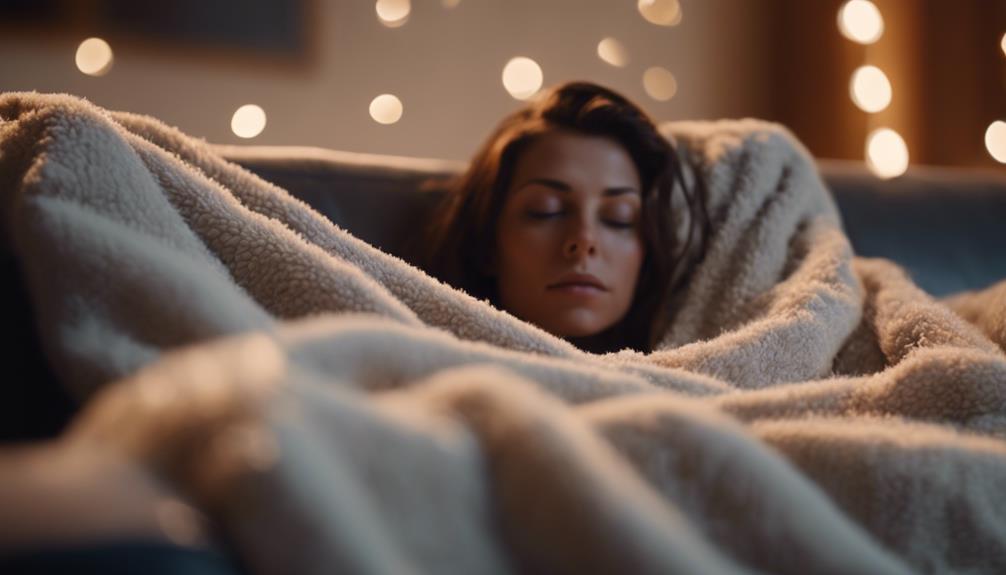
Understanding the potential health implications of electromagnetic fields (EMFs) emitted by electric throws is important for guaranteeing safe usage. When it comes to electric throws and EMFs, here are some key points to take into account:
- Electric throws, similar to electric blankets, emit low-frequency EMFs that haven't been proven to cause cancer.
- Studies indicate that typical EMF exposures from electric throws aren't linked to cancer risks.
- There's no convincing evidence suggesting that EMFs from electric throws pose a cancer risk.
- Pregnant women are advised by the World Health Organization to avoid electric blankets, and the same caution applies to electric throws.
To mitigate any potential risks associated with EMFs from electric throws, it's essential to adhere to safety guidelines and ensure proper use of these devices. By following recommended practices, users can enjoy the warmth and comfort of electric throws while minimizing any health concerns related to electromagnetic fields.
Safety Considerations for Different Users
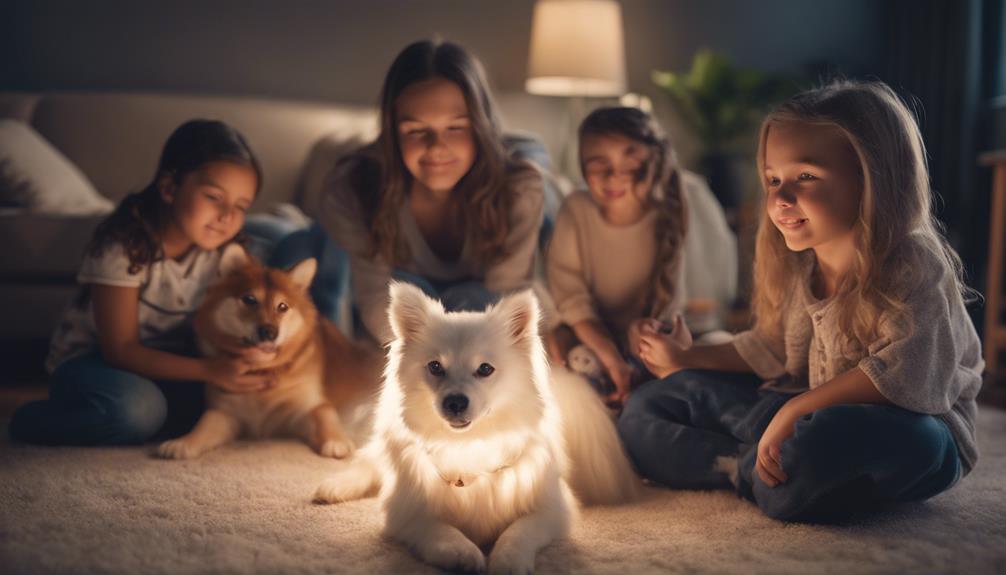
Considering the safety aspects for various users, it's essential to pay attention to specific guidelines and precautions when using electric throws. Older adults should opt for newer electric throws that meet current safety standards to minimize risks. It's important for them to regulate the temperature at a comfortable level to avoid overheating.
Following the manufacturer's instructions, particularly for older models, is essential for the safe use of electric throws. Regular visual inspections should be conducted to check for fraying or exposed wires, ensuring the throw's safety. Proper storage in a dry, cool location and cautious handling can prevent damage to the electric throw and maintain safety standards.
Frequently Asked Questions
Is It Safe to Sleep With a Heated Throw?
Sleeping with a heated throw can be important when used correctly. It's vital to follow manufacturer guidelines and make sure the throw has safety features like auto-shut off.
Avoid sleeping with the heat on high settings to prevent burns. Regularly check for damage. Consult the manual for specific safety instructions.
When Should You Not Use an Electric Blanket?
When is it crucial not to use an electric blanket?
It's important to avoid using electric blankets on infants, young children, or paralyzed individuals due to burn risks. Individuals with urinary incontinence should also steer clear to prevent accidents. Wetness and electricity don't mix, so never use an electric blanket if it's wet. Falling asleep on a bunched-up blanket can lead to burns, especially for those with decreased sensitivity like people with diabetes.
Be cautious and prioritize safety.
Are Electric Throws Worth It?
Electric throws are definitely worth it. They provide localized warmth and comfort, have adjustable heat settings, and offer energy efficiency.
With various sizes, designs, and materials available, they suit individual preferences.
Is It Safe to Leave an Electric Blanket Plugged In?
Leaving an electric blanket plugged in unattended poses a fire hazard due to potential overheating. Faulty wiring or damaged cords can increase the risk of electrical fires.
Unplugging when not in use is a safety measure. Following manufacturer's instructions and checking the condition regularly can prevent accidents.
It isn't safe to leave an electric blanket plugged in, and precautions should be taken to minimize risks.
Are Electric Throws Safe to Use?
Electric throws are worth it for those looking for a safe and convenient way to stay warm. These products have built-in safety features, such as automatic shut-off timers and overheating protection, to ensure peace of mind while using them. With proper usage, electric throws are a safe and cozy addition to any living space.
Conclusion
To sum up, electric throws can be safe when used properly and with caution. However, it's important to always follow the manufacturer's instructions, regularly inspect for any damage, and avoid leaving them unattended.
For example, a hypothetical scenario could involve a user leaving their electric throw on overnight, causing it to overheat and potentially pose a fire hazard.
By being vigilant and responsible, the risks associated with electric throws can be minimized.

